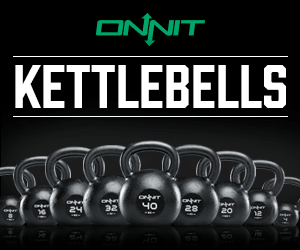[ad_1]
Uncontrolled swelling contributes in muscle loss and weak point in numerous illness, consisting of rheumatoid arthritis. A brand-new research study recommends that when worked out, our muscles have an inherent capability to decrease this damaging swelling.
Inflammation is a blended true blessing. In the short-term, it deals with infections and promotes muscle regrowth after an injury.
Persistent swelling, on the other hand, plays a part in numerous health problems, consisting of rheumatoid arthritis and sarcopenia, which is muscle wasting related to aging.
Fortunately, a wealth of proof recommends that routine workout can assist counter the results of swelling in aging, likewise referred to as “inflammaging.”
In specific, remaining fit and active decreases the lasting, or persistent, swelling understood to increase the danger of numerous illness that impact older individuals.
Exactly how active muscle fibers satiate swelling has actually been uncertain, nevertheless.
Most scientists had actually presumed that swelling is minimized by molecular cross-talk in between muscle fibers and other cells in muscle tissue, such as fat cells and immune cells.
But a brand-new research study from biomedical engineers at Duke University, in Durham, NC, recommends that muscle cells are completely efficient in managing swelling on their own.
The research study has actually been released in the journal ScienceAdvances
“Lots of processes are taking place throughout the human body during exercise, and it is difficult to tease apart which systems and cells are doing what inside an active person,” describes Nenad Bursac, a teacher of biomedical engineering at Duke and the senior author of the term paper.
To focus specifically on muscle cells, for that reason, the group grew human muscle that was without other kinds of cell.
Prof Bursac’s laboratory has actually been growing skeletal muscle in petri meals for almost a years. They can differ the cellular makeup of the muscle, which is totally practical and can contract.
“Our engineered muscle platform is modular, meaning we can mix and match various types of cells and tissue components if we want to,” statesProf Bursac. “But in this case, we discovered that the muscle cells were capable of taking anti-inflammatory actions all on their own.”
To imitate persistent swelling, for 7 days the scientists splashed their lab-grown muscle with interferon-gamma, an immune signaling particle that promotes swelling and has actually been connected to muscle wasting and dysfunction.
As anticipated, the muscle fibers diminished and ended up being weaker.
Next, to imitate workout, the researchers sent out a small electrical current through the muscle.
Remarkably, gradually, the present promoted muscle development. It likewise minimized the muscle-wasting and weakening results of interferon-gamma.
The researchers handled to determine the precise molecular path accountable for these results on swelling in muscles. They revealed that interferon-gamma promotes this path, whereas workout prevents it.
“Not only did we confirm that interferon-gamma primarily works through a specific signaling pathway, we showed that exercising muscle cells can directly counter this pro-inflammatory signaling — independent of the presence of other cell types or tissues,” states Zhaowei Chen, a postdoctoral scientist inProf Bursac’s laboratory and the very first author of the paper.
The research study has more than simple interest worth– it might affect the treatment of clients.
Two drugs authorized for rheumatoid arthritis, called tofacitinib (Xeljanz) and baricitinib (Olumiant), work by preventing the very same inflammatory path.
A just recently released pilot research study tips that baricitinib might likewise be a safe and reliable anti-inflammatory treatment for clients hospitalized with COVID-19
As a last test of their findings, the scientists at Duke used each drug in turn to their lab-grown muscle.
They discovered that both drugs obstructed the results of interferon-gamma, and while doing so avoided muscle wasting and weak point.
In addition to checking out the anti-inflammatory results of workout, the authors propose that researchers might utilize lab-grown muscle to evaluate the capability of other drugs to avoid squandering and persistent swelling.
Prof Bursac describes:
“These results show just how valuable lab-grown human muscles might be in discovering new mechanisms of disease and potential treatments. There are notions out there that optimal levels and regimes of exercise could fight chronic inflammation while not overstressing the cells. Maybe with our engineered muscle, we can help find out if such notions are true.”
[ad_2]



